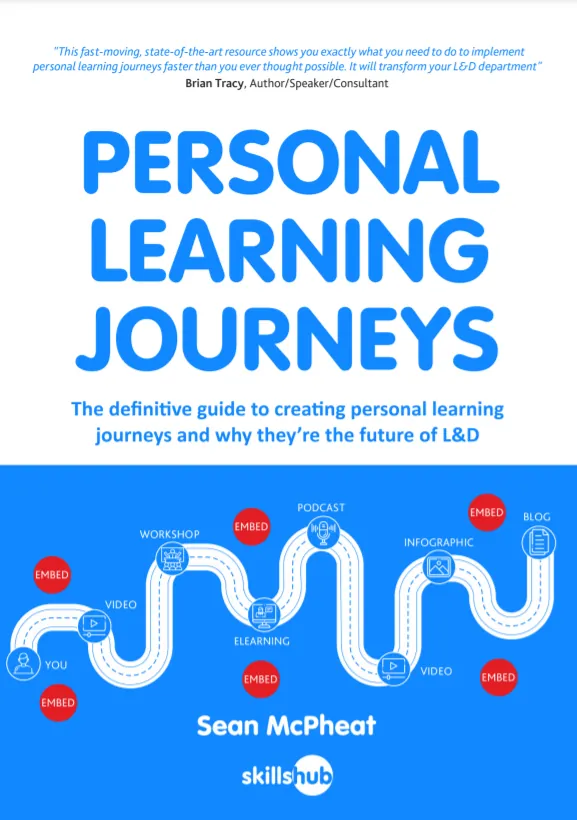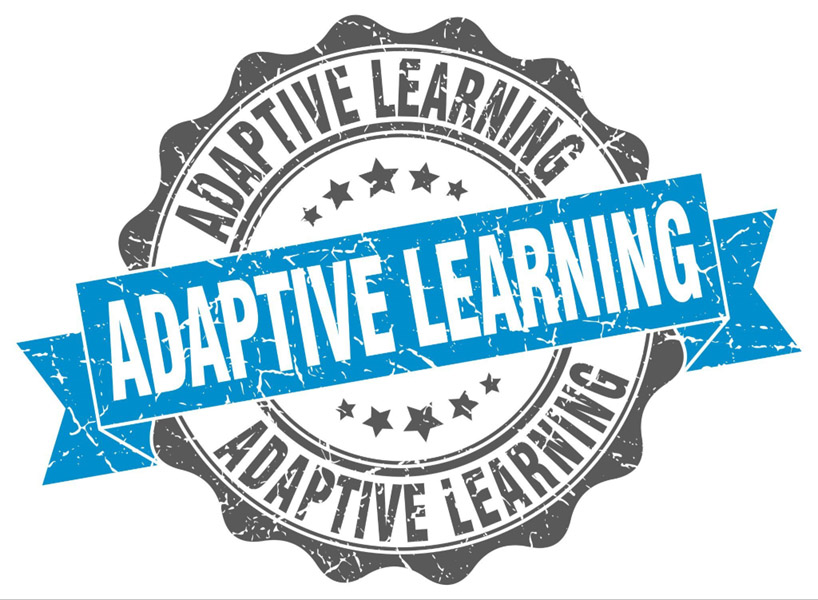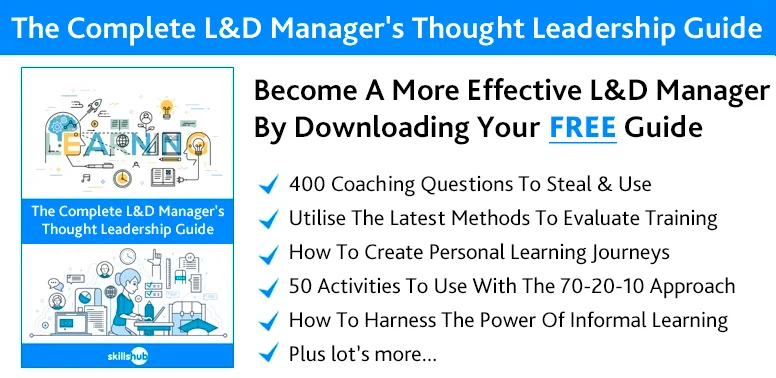
Personalised Learning with AI has become a groundbreaking approach for eLearning companies.
By using artificial intelligence to fit learning experiences to individual preferences and behaviours, companies can predict and significantly improve learner engagement.
The question is: how does this process work, and what makes it so effective in modern eLearning environments?
Here we’ll examine the several ways in which AI and personalisation is revolutionising the eLearning space, making courses fit their students, and finding the right students for the right courses.
How Personalised Learning with AI Enhances eLearning
AI has changed eLearning by offering unique learning experiences designed to meet each learner’s individual needs.
Using advanced algorithms, an AI-powered system can assess a user’s strengths, weaknesses, preferences, and engagement levels to build personalised learning paths. These pathways adjust in real-time, ensuring that content delivery is always relevant and targeted to each learner’s progress.
This is called a Content Delivery Network (CDN) approach, in which the learner’s pathway through a selection of possible content is shaped by each user’s needs and preferences.
According to a Carnegie Learning’s Artificial Intelligence in Education 2024 Report, 25% of teachers using AI reported that it assisted with personalised learning. Seventeen percent also reported improved learner outcomes.
A research paper from 2023 (Das and Malaviya) found that “[our] research demonstrates a positive correlation between personalised AI-based adaptive learning and improved academic achievement, engagement, and satisfaction.”
Such bespoke teaching is a world away from the “one size fits all” approach to traditional course creation, where lessons must be designed to somehow fit learners of all abilities and experience levels (often a thankless task).
By contrast, the ability to dynamically modify learning experiences not only improves outcomes but also helps eLearning platforms create tailored L&D strategies for user retention and satisfaction.
After all, if your students don’t turn up, or fail to engage with the material, it doesn’t matter how cleverly written your course content is. If they don’t engage, you’re not reaching or retaining your desired audience.
Fortunately, this is where AI can prove invaluable.

Learn How To Create Personal Learning Journeys For FREE!
Predicting Learner Engagement with AI in eLearning
Firstly, let’s look at why engagement is so vital to eLearning, and why it’s fertile ground for AI intervention.
Why predicting learner engagement matters
Engagement is a key driver of success in eLearning. When learners are engaged, they are more likely to retain information, complete courses, and apply new skills in real-world contexts.
Of necessity, most eLearning is remote, without a supervising educator present in the room. This makes it hard to directly witness user engagement (or disengagement). AI fills this vital gap, both in terms of monitoring and reporting engagement, and in optimising content to increase it.
Predicting and optimising engagement can help reduce dropout rates, improve learning outcomes, and provide actionable insights for instructors.
AI-driven engagement prediction for eLearning success
By using machine learning algorithms and predictive analytics, eLearning platforms can analyse vast amounts of learner data.
These systems track various engagement indicators – such as time spent on modules, interaction frequency, and assessment performance. Sophisticated analytic tools can even follow the progress of a cursor on screen to see how long it takes a learner to read and complete a particular topic.
Collating all this data, AI then identifies patterns and can predict when a learner is at risk of disengaging. Instructors can act proactively to re-engage users with tailored content, notifications, or adjustments in difficulty.
Alternatively, automated processes can kick in to prompt users with “hints” or reminders.
AI Learning Paths – Creating Tailored Experiences
AI-powered learning paths offer a highly personalised educational journey, one that evolves based on the learner’s style, pace and progress.
Whether for a beginner needing fundamental concepts or an advanced learner seeking in-depth knowledge, AI creates a dynamic learning flow that responds to their unique journey.
This strategy is in line with how younger generations use YouTube, Skillshare, or other online video or educational platforms to self-educate on topics they enjoy. The algorithm pushes the content best optimised for engagement, that previous viewers have highly rated.
AI systems can even optimise content for increased accessibility, by simplifying text, changing its size, or delivering modules using audio or video lessons rather than written lessons. This makes eLearning programmes much more available to a wider range of potential students, addressing inequalities in learning outcomes.
How AI-powered learning paths improve learner outcomes
AI systems can continuously evaluate a learner’s performance to provide immediate feedback, recommend further study materials, and adjust the difficulty of tasks.
This keeps learners motivated by aligning course content with their needs and abilities.
Such interventions are popular with students. A recent study by Pratama et al, found that 88% of students found AI a significantly important tool. The same percentage of students approved of AI education systems becoming virtual instructors and intelligence assistants.
However, most study respondents did not want AI to directly replace human instructors. There will always be a role for an empathic, human instructor, even if the materials they teach are AI-selected.
Learning path optimisation with AI
AI enhances learning path optimization by analysing which elements work best for learners with similar profiles.
It can recommend skipping certain topics, revisiting others, or introducing additional resources to ensure mastery of the material.
This personalization not only enhances learner satisfaction but also leads to more efficient and effective educational experiences.
According to a recent World Economic Forum Report, Shaping the Future of Learning, “Based on data patterns, AI can predict learning challenges, identify gaps and create personalised learning journeys by analysing trend data and students’ learning history, preferences and performance.”
There are obstacles of course. The same WEF report concludes “A global survey of
more than 17,000 people in 2023 found that 61% of respondents are either ambivalent or unwilling to trust AI systems, while 71% of people are concerned about potential risks.”
However, such concerns are more pertinent to children’s education, and the use of generative AI tools for research or essay writing. In the content of engagement analytics and content pathway creation, the risks are much reduced and reticence in uptake is significantly less.

The Role of Adaptive Learning with AI in eLearning
Adaptive learning with AI refers to the ability of eLearning platforms to automatically adjust learning experiences based on real-time feedback from learners.
This adaptability is crucial in a learning environment where one-size-fits-all approaches often fail.
Let’s look a little more closely at how this adaptive AI works in an eLearning context.
Personalising the learning experience with adaptive AI
With adaptive AI, content delivery is no longer linear. There is no one recommended route through the content. Students can feed their own enthusiasm and find their own best path through a topic.
Meanwhile, the system monitors learner behaviour, responses, and preferences to adjust the curriculum accordingly. This ensures that every user receives content that matches their pace and ability, making learning more interactive and less frustrating.
By providing timely interventions—like offering additional resources or simplifying complex topics—adaptive AI ensures learners remain engaged throughout their courses.
Another use of AI is intelligent tutoring, providing one-to-one, individualised programmes that identify areas of concern and supply learners with additional materials to support success. Natural Language Processing (NLP) allows chatbots and virtual assistants to understand requests delivered in plain English, even when such requests contain typos or grammatical errors.
AI-powered systems can satisfy students who learn in different modes by modifying the media chosen to deliver content. A visual learner might receive more video content while a student who prefers a read-write approach might receive more written modules.
Example: A student is learning about social media marketing. They have a particular interest in LinkedIn because they participate in selling a B2B product. They decide to delve deeper into this aspect of the course, and progress more briskly through other modules.
Identifying this specialised area of interest, the AI-powered personalisation algorithm serves up some useful links to podcasts and video content going deeper into this aspect of social B2B marketing.
AI in Corporate Training and eLearning
The corporate world has also embraced AI for bespoke eLearning, particularly in training programs where customization is key to achieving specific business goals.
Here, we’ll examine how customised learning is particularly well-suited to a corporate educational setting.
AI customising learning paths for corporate training
In corporate training, AI can customise learning paths based on an employee’s current skill set and future career aspirations. In any given group of employees, these can be widely divergent, dependent on individual learner’s life paths and career progression.
Whether employees are onboarding or enhancing their expertise, AI ensures they receive the most relevant content, optimising their training and development and improving overall performance.
As companies continue to adopt AI-driven training programmes, they are better positioned to achieve elevated levels of employee engagement and productivity.
Example: Two learners are both taking a conflict resolution course at work. One is a senior manager with over 20 years’ experience who is refreshing his knowledge following an incident. The other is a junior team leader, who is new to managing her team.
The latter may require more basic and team-focused eLearning content that assumes no prior management experience. The former will be able to skip some introductory modules and focus more on content about the psychology of managing managers in conflict situations. Both will receive personalised courses that support their individual needs.

Predictive Analytics in AI-Powered eLearning
Predictive analytics plays a key role in AI-powered eLearning.
By collecting and analysing data on learner performance, engagement, and preferences, AI can forecast future learning behaviours and outcomes.
These insights allow eLearning platforms to not only predict but also influence learner engagement by providing adaptive interventions or alternative learning paths.
Example: The AI notices a pattern – learners seem to spend too long on a particular page of text on screen to accurately read it. Many of them then fail the interactive quiz element that references this content.
The AI-informed analytics feature highlights this issue to eLearning content writers who amend the text by condensing it and turning one screen into three with additional visuals. As a result, more learners engage with the content, and the average participant quiz score increases.
Challenges in implementing AI-Powered eLearning
There remain challenges in incorporating AI systems within eLearning platforms. As elaborated in a 2019 article in Harvard Business Review, these include:
- Data Privacy: Collecting substantial amounts of student data may raise concerns about privacy and ethical data use.
- Student Trust: Students are increasingly protective of their personal data due to past data breaches.
- Cost and Infrastructure: Implementing AI systems requires significant investment in technology and infrastructure.
- Teacher Training: Educators need training to use AI effectively.
- Human Oversight: AI cannot replace teachers in complex tasks requiring empathy, which means there are limits to how it can be implemented.
Fortunately, in the five years since the HBR article was written, eLearning designers and developers have found subtle ways to integrate AI in ways that do not require highly personal student data.
Instead, AI analytic systems aggregate behavioural data and use this to spot patterns and trends, then adjust content delivery accordingly. This is a far less objectionable use for AI in an eLearning context,
The Takeaways
Personalised learning with AI represents the future of online education and corporate training.
Through predictive analytics, learning path optimization, and adaptive experiences, AI is transforming how learners engage with content. eLearning companies that harness these technologies are better equipped to predict and enhance learner engagement, ensuring long-term success for both learners and institutions.
Ready to create your own bespoke eLearning program? Discover how an advanced eLearning platform can deliver engaging, adaptive, and personalised learning experiences through cutting-edge eLearning content.













